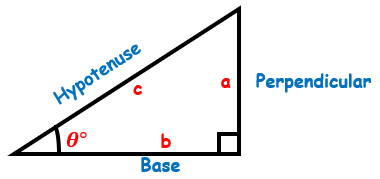A cornerstone of geometry for ages has been the Pythagorean Theorem, one of the foundational ideas in mathematics. This theorem, which is named after the Greek mathematician Pythagoras, relates to right triangles and aids in the calculation of some of their properties. It is a flexible tool used in a variety of industries, including engineering, computer graphics, and construction. Manually resolving Pythagorean equations, however, can be difficult and time-consuming, particularly when working with complex numbers or a lot of calculations. Thankfully, easy-to-use Pythagorean Theorem calculators can quickly find the hypotenuse for us in this day and age of technology. We shall examine the Pythagorean Theorem, its importance, and how these calculators function to simplify our lives in this post.
Acquiring Knowledge of the Pythagorean Theorem
Let’s brush up on our knowledge of the Pythagorean Theorem before we explore the world of its calculators.
According to the Pythagorean Theorem, the square of the length of the hypotenuse in a right triangle equals the sum of the squares of the lengths of the other two sides. The hypotenuse is the side that faces the right angle. The mathematical formulation of this theorem is as follows:
C2 = a2 + b2
Where:
The hypotenuse’s length is shown by the letter c.
The remaining two sides of the right triangle, referr to as its legs, are represent by the lengths a and b.
The Pythagorean Theorem Calculator is not only tremendously useful but also gorgeous in its simplicity. It can be use in a variety of real-world situations to solve navigation and physics-relate issues as well as to calculate distances and side lengths for construction projects.
The Hypotenuse and Its Importance
In geometry, the hypotenuse, frequently written as c in the Pythagorean Theorem, has a specific significance. It is the right triangle’s longest side and sits exactly across from the right angle. When working with right triangles, it is essential to comprehend how long the hypotenuse is since it enables us to determine any missing side lengths or angles.
Imagine, for instance, that you need to climb a ladder that is lying against a wall. You can use the Pythagorean Theorem to determine the height the ladder can reach by knowing the lengths of the ladder and how far away from the wall it is situate. The theorem allows you to precisely determine the height in this situation when the ladder stands in for the hypotenuse.
The Pythagorean Theorem Calculator is simple. Although the Pythagorean Theorem is a useful tool, it can take some time to manually calculate the hypotenuse or other triangle features, particularly when working with numerous calculations or complicated values. Calculators for the Pythagorean Theorem come in handy in this situation.
Calculators for Pythagorean Theorem: Operation
Right triangle problem-solving is automated by the use of digital Pythagorean Theorem calculators. Based on the given information, they are intended to quickly compute the length of the hypotenuse or any other side. Here is how they function:
Values to Enter
To begin, enter the calculator with the known values. In most cases, you must enter the lengths of two sides, a and b, or the hypotenuse’s length c.
Computation
After the input values are entered, the calculator does the computation using the Pythagorean Theorem formula. To get the length of the missing side, it squares the known side lengths, adds them up, and then takes the square root of the total.
Results Display
The calculator shows you the calculated value, which is often rounded to a certain number of decimal places for convenience.
Numerous Pythagorean Theorem calculators include optional extras like the capacity to compute angles, deal with complicated numbers, or graphically represent the triangle.
Why Pythagorean Theorem Calculators Are Beneficial?
There are numerous benefits of using Pythagorean Theorem calculators:
Efficiency and Speed
Calculators can quickly complete intricate mathematical calculations, saving you time and effort.
Accuracy
By removing the possibility of human error, these tools guarantee accurate outcomes every time.
Complex Computation
Pythagorean Theorem calculators can handle complex computations and multiple calculations with ease.
They are a great instructional tool for assisting pupils in grasping the theory and applications of the Pythagorean Theorem. Pythagorean Theorem calculators are indispensable for practical applications, whether you’re a specialist in building or engineering or simply need to handle common problems.
Calculators for Pythagorean Theorem Types
To meet varied purposes, Pythagorean Theorem calculators are available in a variety of formats. Here are a few typical examples:
Online Calculators
Online calculators are available on any device with an internet connection and are web-base utilities. They are practical and frequently include extra features like step-by-step instructions.
Mobile Apps
Hypotenuses may be easily calculated on the fly thanks to the numerous mobile apps that are readily available for both Android and iOS smartphones.
Graphing Calculators
Advance graphing calculators, which are frequently use in schools, have Pythagorean Theorem capabilities built in. In addition to handling more difficult mathematics, they can graphically represent triangles.
Conclusion
The Pythagorean Theorem is a crucial mathematical idea that has applications in a variety of industries, including astronomy and building. Although the theorem itself is simple and elegant, manually fixing issues can be time-consuming and error-prone. Pythagorean Theorem calculators have grown to be useful resources that make these calculations simple and available to professionals, students, and anybody else who needs prompt and precise results.
Pythagorean Theorem calculators are widely accessible in the modern digital era in a variety of formats that can accommodate diverse needs and levels of sophistication.
